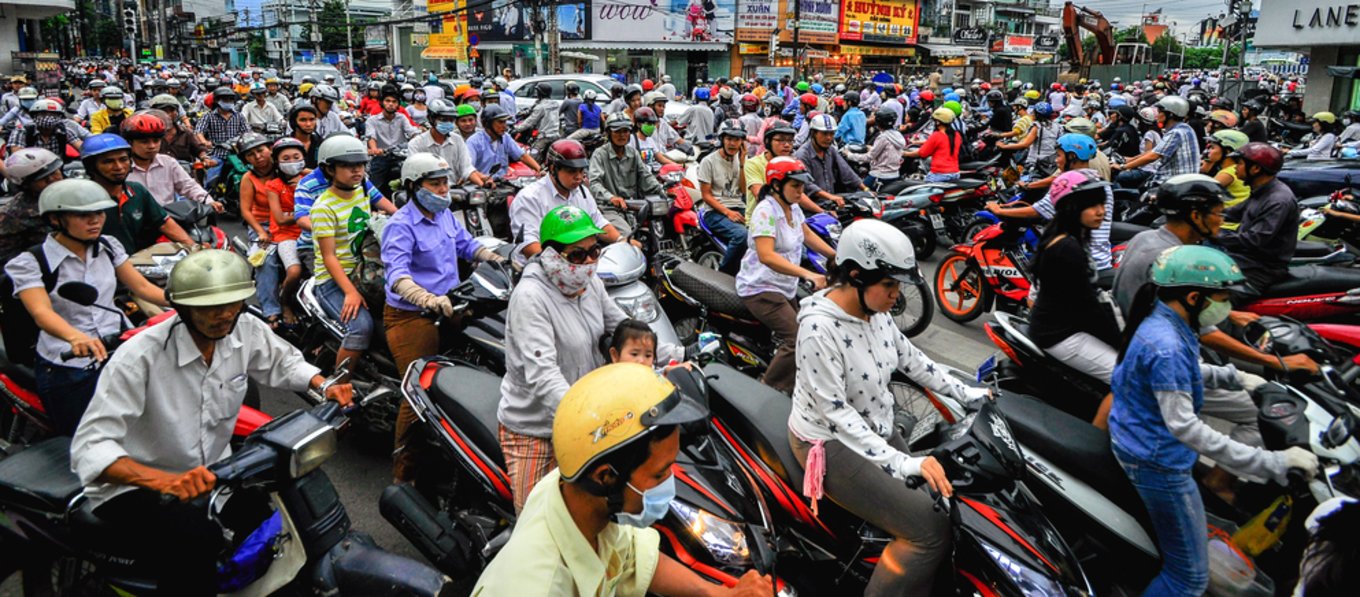Part of the fun of travel is navigating yourself around a country. Each destination seems to have it’s own quirky ways of doing things and it’s rather rewarding when, by the end of a trip, you finally get the hang of how everything works and are beginning to regard yourself as somewhat of a local. Vietnam is no different. But in a country where the traffic jams and bad drivers are notorious, and where you’d be wise to keep your wits about you to avoid tourist scams, it can’t hurt to have a little helping hand from our insider guide to transport in Vietnam before you set off. Read on, fellow travelers, and if you have any more questions, leave us a comment at the end.
How To Get Around Vietnam
Night Train
If you’re travelling on a budget, getting the night train or bus between towns is an economical way to save on hotel costs. You can chose from a variety of options depending on how much you want to spend – from hard seat to soft sleeper between all of Vietnam’s major cities. There are four beds to a carriage, so if you’re travelling in a small group you won’t even need to share with strangers. It’s no problem to bring drinks and snacks on board and there are usually a couple of convenience stores at most stations, so stock up before you ride as those hours often pass you by slower than you think.
Tip: If you’re sleeping hard or soft seat and you have to leave your bag out of sight, keep the essentials on you when you sleep. Pickpockets are notorious on sleeper trains.
It’s advisable to book your seat or sleeper in advance, as trains are often booked up a few days before (especially in peak tourist season). You can book online beforehand here.
Night Bus
Even though the night buses tend to be cheaper than trains, it’s worth splashing out a little more on the latter. The Vietnamese are known for ignoring the rules of the road, and bus drivers are some of the worst culprits. As well as driving way over the speed limit, they often drive on the wrong side of the road and only swerve to avoid incoming traffic at the very last minute. The buses themselves are pretty modern and very clean, but some lack toilets and only stop off once in the 13-15 hour drives.
Tip: When you do stop off, make sure to carry all your essentials (passport, phone, money) with you. The driver won’t lock the bus when he leaves as some passengers choose to stay on board, so don’t get lulled into a false sense of security.
You can book your tickets at any travel agents, and unlike the night trains you can always find a seat on a sleeper bus. If you want to book online beforehand, you can book tickets for some routes here.
Plane
Many travellers choose to fly domestically in Vietnam as flights are relatively cheap and run frequently between major cities. Travelling by other means of transport can often waste whole days of exploring, so it might be preferable to fly if you’re on a tight schedule. Expect last minute delays as the airlines are notorious for never running on time, but travel times will still be less than the long overnighters on trains or buses.
The 2 main domestic flyers are Vietnam Airlines and Jetstar. Vietnam Airlines is the more popular of the two, but flights tend to be marginally more expensive.
Getting Around Town
Scooter
Scenes like this are actually not uncommon in Vietnam. Scooters dominate the congested roads in every Vietnamese city, and make up over 90% of the country’s vehicles. Drivers will precariously strap anything and everything to their bikes, from home supplies and groceries to live animals and young children (!).
The chaos of Vietnam’s motorbike heavy motorways is daunting. But if you’re brave enough to chance a ride, it’s one of the most exhilarating ways to travel around town. There are no rules: cross junctions when it seems opportune and be ready to dodge oncoming traffic at any moment. Don’t expect other riders to look out for you, just get out of their way. By law you have to wear a helmet, but some locals understand this to mean a flimsy cap.
You can rent scooters from just about anywhere in Vietnam – hotels, travel agents, hostels and petrol stations to name a few.
Taxi
Metered taxis are notoriously cheap by international standards – priced at around 10-15,000 dong per kilometre. However, watch out for erratic meters that quadruple in a second and avoid unmetered cabs altogether. Drivers who set their own rate will try and charge you through the roof, and they’re not ones to negotiate. You’ll find taxi scamming hardest to avoid in typically touristy areas, such as museums in the major cities and the airport.
The longer you spend in Vietnam, the better a sense you’ll get for how much a journey should cost. But play it safe when you first arrive and only look to Vinasun and Mai Linh – the two known trustworthy operators. If you notice the taxi fare to suddenly jump, ask the driver to stop immediately, get out, and find a new taxi.
Sampan
A “sampan” is a little wooden boat with a flat bottom, traditionally used as a fishing boat. They can be found all over South East Asia as well as in Vietnam, and are a fantastic means for accessing the natural beauty that lies beyond the land. In the picturesque harbour town of Hoi An, sampan drivers are docked all along the waterfront waiting to show you the rural homes that decorate the riverbank. Further North in Ninh Binh, you can spend hours winding the waterways in awe of the phenomenal limestone pinnacles that adorn the area.
Part of the experience is also about watching the sampan drivers at work. The majority are elderly local residents, who can paddle for hours on end, despite their age. Many have learnt to steer with their feet, curling their toes around the handles to control them.
Take note: your sampan driver will try and sell you tourist tack en route, and will expect you to tip too. Don’t be surprised if they’re ungracious about the amount – they will challenge you on anything less than 20,000 dong, and will continue to pester you for more until you give in or escape.
Sampan rides are often included as part of other tours such as this full day adventure on the Mekong, a standard excursion on most Halong Bay tours, or this private day trip to beautiful Hoa Lu.
Bike
Cycling has always been a popular form of transport for tourists and locals alike. If you’re a little nervous to get on a scooter, this might be your safer alternative. Though considering the volume of road traffic, insisting on a helmet when you rent your bike is a must. For an extra level of safety, numerous biking tours are on offer across the country, ranging from day trip excursions to month-long expeditions. It’s by far the best way to experience the full diversity of Vietnam, from emerald rice paddies, to glistening white beaches; from bustling cities to flowing rivers and dramatic mountains.
Cyclo
A cyclo is a bicycle rickshaw – a form of transport that’s slowly dying out but still found in the country’s major cities. You’ll spot cyclo riders on street corners calling out to the tourists that pass by. Though some haggling is of course required, once you’re aboard, these leisurely trikes make for a pleasant way to sightsee a city at a more relaxed pace and without having to navigate the crazy traffic alone. For example, cyclos make for an excellent way to discover Hanoi’s network of 36 traditional trade streets in the Old Quarter such as on this Hidden Hanoi Afternoon Tour by foot and by cyclo.



























